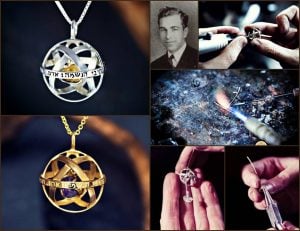Derald G. Langham – Genesa Crystal Discoverer
View designs – https://goo.gl/YcjgvU
Use 15% discount coupon KAGOLD2017 (in cart)
Derald George Langham was an American agricultural geneticist, sesame researcher, and founder of the Genesa Foundation.
He is known as the “father of sesame” in the Western Hemisphere for his basic research on the genetics of sesame. Most of the sesame lines grown in the Americas came from his breeding work. Derald Langham is less known for his genetic work in corn and beans.
Langham received his first Ph.D. in Genetics in from Cornell University in Plant Genetics in 1939, and his second Ph.D. in humanities in 1969 from United States International University in San Diego.
In the 1950s Langham founded the Genesa Foundation, which promoted the use of Circle Gardening techniques and the Genesa ideas. Genesa, he later said, came from a combination of the word “gene” with the letters “SA”, which stand for South America.
He also promoted the use of his Genesa Crystals or eight-point patterns that reflect the cells of an embryonic organism. According to Dr. Langham, these crystals had “the full potential for infinite love, for infinite wisdom, for infinite form, for infinite energy, for infinite power, for the Soul, for eternal time, for infinite velocity, for infinite faith. It has all your goals, your desires, your motivations – even life itself.”
Langham believed that the crystal, known as an Archimedean solid or a cuboctahedron, held infinite potential for people to bond with the energies in their lives. One could meditate in a larger Genesa crystal standing in a garden to help tune into the biofields of the surrounding plants.
His 1978 book “Circle Gardening” discusses his use of Genesa principles in the shaping and contouring of garden beds to enhance plant growth. While in Venezuela in the mid-1950s, Langham searched for a solution to the problem of keeping his valuable genetic strains of sesame from mixing together during heavy rains. During this search, he discovered that his sesame plants grew much better when planted in a circle, rather than in straight lines in usual growing patterns.
In a circle garden, only the inner side of the circle is watered, and the outside remains dry. He believed that the spacing would provide better air movement and sunlight for all the plants. A New York State University study showed that levels of phosphorus, nitrogen, and potassium increased inside the circles without any fertilizer added to the soil.
View designs – https://goo.gl/YcjgvU
Use 15% discount coupon KAGOLD2017 (in cart)

